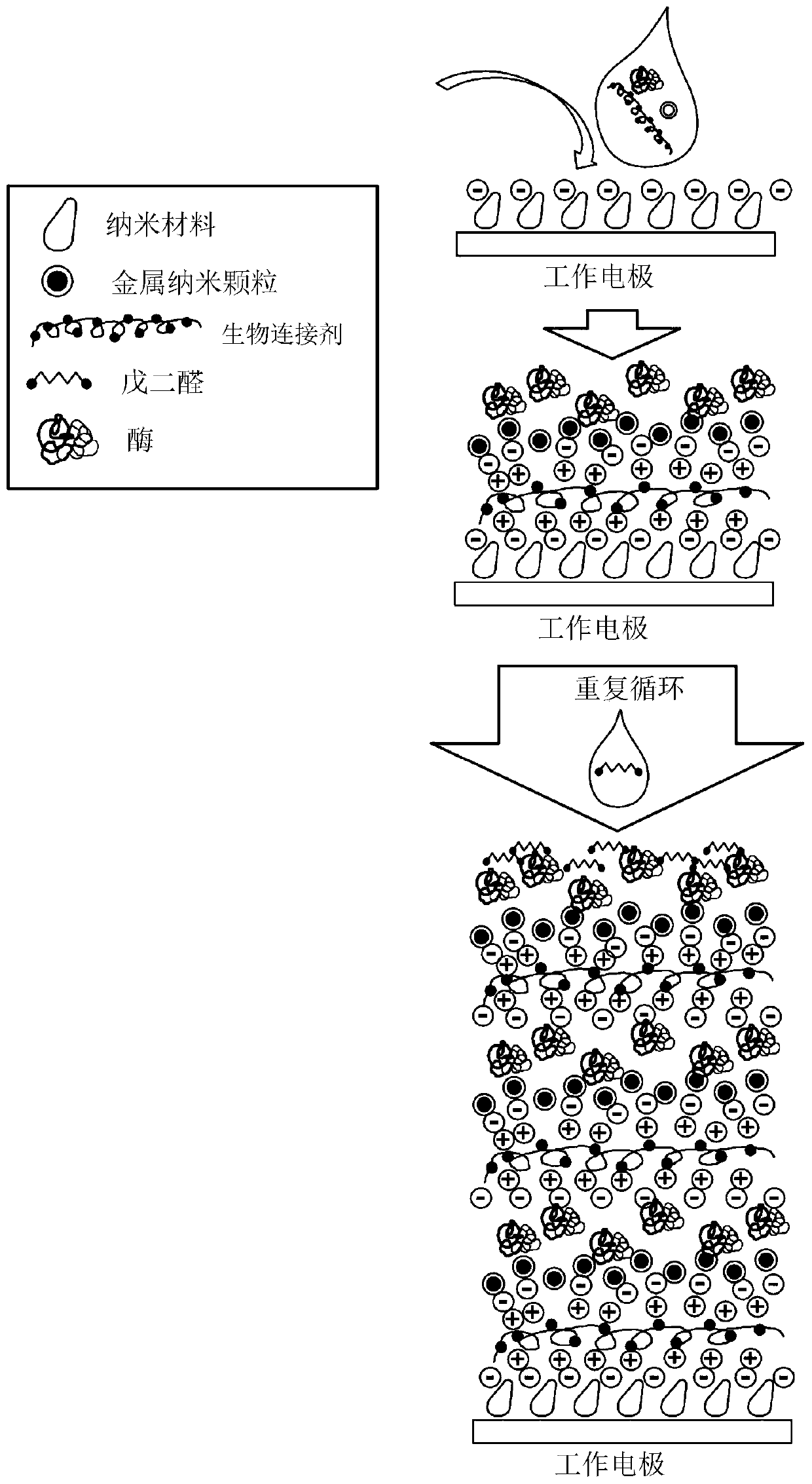Durable enzyme-based biosensor and process for drop deposition immobilization
A sensor and sensor element technology, applied in the direction of sensors, nano-scale sensors, instruments, etc., can solve the problems of limited use, short shelf life, etc.
- Summary
- Abstract
- Description
- Claims
- Application Information
AI Technical Summary
Problems solved by technology
Method used
Image
Examples
Embodiment Construction
[0080] The technology described herein involves the detection of biomarkers using biomolecule-based biosensors that have an extended shelf life compared to previous biosensors. In preferred embodiments, the biosensor relies on the use of enzymes that catalyze electron transfer reactions specific for the biomarkers to be detected. In other embodiments, biomarkers are detected using biomolecules other than enzymes (eg, non-enzymatic proteins, antibodies, aptamers, lipids, nucleotides, bacteria, and any combination thereof).
[0081] Previous enzyme-based biosensors (such as those using glucose oxidase) often suffer from a short shelf life, often less than a month, or only a few days, mainly because the enzymes used in their design are unstable. . This limits the clinical use of enzyme-based biosensors. See Gibson, T.D. Biosensors: The Stability Problem, Analusis, 1999, 27(7): p.630-638. Biosensors fabricated according to the present technique overcome this shortcoming. This ...
PUM
 Login to View More
Login to View More Abstract
Description
Claims
Application Information
 Login to View More
Login to View More - R&D
- Intellectual Property
- Life Sciences
- Materials
- Tech Scout
- Unparalleled Data Quality
- Higher Quality Content
- 60% Fewer Hallucinations
Browse by: Latest US Patents, China's latest patents, Technical Efficacy Thesaurus, Application Domain, Technology Topic, Popular Technical Reports.
© 2025 PatSnap. All rights reserved.Legal|Privacy policy|Modern Slavery Act Transparency Statement|Sitemap|About US| Contact US: help@patsnap.com



